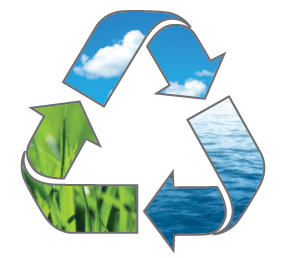Addressing the Practicalities Of Aviation’s Long-Term Sustainability

In Toulouse, an ATR 72 has begun to participate in Universal Hydrogen’s airport surface operations trials.
 As aviation is turning to new technologies and resources to define a sustainable future, some efforts are beginning to become concrete advancements.
As aviation is turning to new technologies and resources to define a sustainable future, some efforts are beginning to become concrete advancements.
Gradually leaving the PowerPoint presentation stage, they are being moved to drawing boards and early testing. In other words, the promoters of new propulsion systems, such as hydrogen-fueled engines and hybrid-electric architectures, are delving into the practicalities of the projects.
- Large OEMs start building hydrogen propulsion systems
- Regional aircraft continue to be vanguard of the decarbonization of aviation
The various endeavors epitomize the different approaches with which a new technology may be tackled. Established players are engaged in a series of multiyear research and technology projects and then development programs. Some startups have chosen to fast-track.
The tasks underway vary from ensuring hydrogen technologies will bring actual benefits—as opposed to creating new problems—to spurring investments in sustainable aviation fuels (SAF) and talking to regulators about how to certify entirely new systems.
Airbus and CFM
Airbus is preparing to flight-test both a hydrogen-burning turbofan and a fuel cell fitted to an electric motor. A modified Airbus A380 with an upper-fuselage wing stub will be used as a testbed for both, starting in 2026.
“We chose the A380 as the platform . . . because of its size,” says Glenn Llewellyn, Airbus vice president for zero-emission aircraft. “Compared to a smaller platform, it is easier to add a fifth engine. . . . We will be able to focus on the technology we want to assess as opposed to aircraft modification work.”
Why is it taking four years? “The idea is to develop all of the technology, implement safety systems and perform a certain amount of optimization,” Llewellyn says. “We want to accomplish a step toward application in a commercial aircraft. With a ‘let’s use commercial-off-the-shelf hardware and fly as soon as possible’ approach, we would fly earlier but not progress as much toward . . . commercializing the technology.”
A GE Passport engine will be flight-tested with hydrogen as part of an Airbus partnership with CFM, the GE and Safran joint venture. With the recent announcement of its fuel-cell test program, Airbus wants to keep all options open. A turbofan may be lighter-weight, but a fuel cell may have a lesser climate impact overall.
The test fuel-cell engine is being assembled in Hamburg. The 2.1-megawatt powerplant resembles a conventional turboprop and will use liquid hydrogen, as will the Passport. The two technologies are being explored in parallel, says Llewellyn. A decision will be made later on which technology to use, in time for entry into service by 2035, he notes.
“At scale, and if the technology targets are achieved, fuel-cell engines may be able to power a 100-passenger aircraft with a range of approximately 1,000 nm,” he explains.
A hydrogen fuel cell and associated electric motor and propeller are expected to be more efficient than burning hydrogen in a gas turbine. Other benefits include the absence of nitrogen oxides (NOx)—which are suspected of contributing to global warming—and an even lower likelihood of forming contrails, which also are contributors.
The effect on contrails from using hydrogen remains one of the biggest unknowns facing the aerospace industry as it evaluates alternatives to jet fuel. “We need to do more detailed studies on the climate impact of using hydrogen,” Llewellyn says. “A DLR Falcon will fly behind the A380 testbed to make back-to-back comparisons between conventional Jet A1, SAF and hydrogen.”
As a first step, Airbus is to start a smaller-scale measurement campaign under its Blue Condor project in the first quarter of 2023.
Other parts of future Airbus aircraft propulsion systems are being constructed. The airframer’s zero-emission development centers in Bremen, Germany, and Nantes, France, have built at a reduced scale a liquid-hydrogen tank and other cryogenic systems including pumps, valves and distribution pipes.
Understanding the use of hydrogen also means studying how the aircraft will be operated at the beginning. “We involve airlines, airports, green hydrogen producers and other players,” Llewellyn stresses. “The idea in the first few years of service is to minimize infrastructure and maximize the number of aircraft operating—for example, several airlines with several aircraft each, all operating from one single airport with one single infrastructure installation. The concept of launch customer will be replaced with the concept of launch cluster.”
Regional Aircraft
Meanwhile, regional aircraft continue to be the vanguard of the decarbonization of aviation: smaller aircraft flying shorter routes within reach of available technology. By the end of 2022, at least four electrified prototypes were to fly.
Two of those aircraft are Cessna Caravans, one all-electric and one hybrid-electric. The widely used cargo and passenger aircraft is proving an attractive choice for startups working to bring decarbonized propulsion to commercial aviation as quickly and cost-effectively as possible.

MagniX and AeroTEC flew the all-electric eCaravan demonstrator in May 2020 and supplemental type certification (STC) of the conversion is underway in the U.S., Australia and Brazil. Ampaire flew its hybrid-electric Eco Caravan prototype in November. Both are targeted at service entry by 2025.
The nine-passenger Caravan is also an early target for hydrogen-electric propulsion developers. Lessor Monte plans to buy 100 fuel-cell powertrains from ZeroAvia to convert Caravans as well as 19-seat De Havilland Canada DHC-6 Twin Otters and Dornier 228s to zero-emission propulsion beginning in 2025.
ZeroAvia has signed an agreement with aircraft manufacturer Textron Aviation to obtain an STC for its Caravan conversion. Textron has a deal to develop and market hybrid-electric and all-electric Caravan conversions with Surf Air Mobility, but the regional operator is facing funding challenges.
Used in large numbers as regional cargo feeders for package carriers FedEx and UPS, the Caravan is also the lead platform for startups developing autonomous flight systems to convert aircraft to remotely piloted operation. Merlin, Reliable Robotics and Xwing are all flight-testing systems in Caravans.
Most initial decarbonized propulsion systems are targeted at the same 600-700-kW power output as the widely used Pratt & Whitney Canada PT6A turboprop, making them suitable for conversion of many nine- and 19-passenger aircraft. But larger electrified regional aircraft are in the cards.
Universal Hydrogen is progressing quickly toward an STC for its hydrogen-propulsion retrofit package on the ATR 72 regional turboprop. As of Dec. 9, the company was planning to start flight-testing the system, based on a fuel cell fitted into a nacelle, by year-end 2022 on a De Havilland Canada Dash 8-300 in the U.S. The Dash 8-300 is to use a 1-megawatt system, whereas the STC will be for a 2-megawatt fuel-cell powertrain.
In Toulouse, airport surface operations trials are underway, with an ATR beginning to participate. Central to Universal Hydrogen’s concept are liquid-hydrogen modules—tanks designed to be swapped instead of filled. Empty modules have been loaded and offloaded with existing airport ground equipment for freight handling. No interface has been installed yet between the module and the aircraft.
Universal Hydrogen’s ATR 72 is expected in mid-2024 to reach the product configuration for which the STC would be granted. Universal Hydrogen co-founder and CEO Paul Eremenko says the schedule calls for flight testing to start in mid-2024 and last just over a year, leading to entry into service in the latter part of 2025.
ZeroAvia is using a 19-seat Dornier 228 as the testbed for the ZA600, its initial 600-kW powertrain, but has begun development of a 2-5-megawatt system for 70-seat regional turboprops and jets. The startup is working with De Havilland Canada to convert the Dash 8 and with MRO provider MHIRJ for the Bombardier CRJ700.
Despite the number of important sales ZeroAvia announced, it was a mixed year for the U.S./UK startup. The company ended November still waiting to make the first flight of its technology on board the Dornier 228 testbed. The year also saw publication of the UK Air Accidents Investigation Board’s (AAIB) report into the incident in which the startup wrote off its previous development platform: a Piper Malibu Mirage that crashed near Cranfield Airport in Bedfordshire, England, in April 2021. Although hydrogen was not a factor, the AAIB highlighted issues with the company culture.
Many of the AAIB’s recommendations had been addressed before the report was published, founder and CEO Val Miftakhov said last summer.
Installation of one ZA600 on the 228 was completed in July, and the final high-speed taxi test took place at Cotswold Airport, England, at the end of September. Endurance testing followed and is now complete. As of late November, the UK Civil Aviation Authority had yet to issue the permit to fly.
Cranfield Aerospace Solutions is beginning with a hydrogen-electric conversion for the nine-passenger Britten-Norman Islander, targeting certification in 2026, and intends to follow with retrofitted and new-design 19-seaters. Germany’s H2Fly and Deutsche Aircraft plan to modify the 40-seat D328eco, flying a demonstrator in 2025.
Both battery- and hydrogen-electric startups are following similar beginning paths by adapting automotive technologies while developing aerospace-optimized systems such as high energy-density batteries and cryogenic liquid-hydrogen storage.
While most activity is around STCs for retrofits to avoid the additional challenge of type-certifying a new aircraft, new electrified designs are under development. Eviation flew its nine-passenger all-electric Alice in September but has delayed certification to 2027 to provide more time for improvements to the battery technology. Tecnam is targeting entry into service in 2026 for the P-Volt all-electric version of its nine-passenger P2012 Traveller.
Other startups have ambitious plans to bring electric aircraft with 40 or more seats to market by the end of the decade, funding permitting.
Public-private partnerships are playing their part. The EU’s Clean Aviation has selected the consortia that will work along the lines defined in a first call for proposals. In addition to the use of hydrogen, the call budgeted for €736 million ($780 million) includes topics on fuel efficiency and hybrid-electric propulsion. The use of hydrogen accounts for one-third in value.
Contracts with the selected consortia for 2023-26 are being negotiated. The period’s focus will be on ground demonstration. Rolls-Royce and Avio Aero (a GE Aerospace company) are leading two different programs in direct combustion of hydrogen. They are using production turbofans in the 15,000-20,000-lb.-thrust range, replacing the combustors and fuel-distribution systems of a Pearl and a Passport. A section of an annular combustor will be adapted, with different geometry and air-mixture characteristics. Then, a full annular combustor will be built.
Engineers will have to find a way to replace conventional fuel in the oil-cooling system, where fuel has so far been used as the coolant. The full engines are expected to run in 2025 on the ground. The project around the Passport is linked to Airbus’ plan to flight-test it later on a modified A380.
Dassault Aviation’s work on certification methods and means of compliance is devised to be useful for every project across Clean Aviation. The European Union Aviation Safety Agency has a framework agreement with Clean Aviation Joint Undertaking.
NASA Projects
From a U.S. industrial and research perspective, Boeing’s pronouncement in 2022 that it will not develop a new commercial aircraft until the end of the decade inevitably raises critical questions about how this might affect the company’s ability—and perhaps that of the U.S.—to keep technological pace with arch-rival Airbus.
Although driven by necessity and the need to restore production stability, Boeing’s decision to continue focusing on derivatives also could make it challenging to attract a new generation of engineers who might be tempted by more dynamic aerospace sectors.

on NASA selecting the TTBW for its next X-plane. Credit: Boeing
Against this background, NASA’s Sustainable Flight National Partnership (SFNP)—a concepts initiative targeting net-zero emissions by 2050—is expected to assume a far higher profile in 2023 as the agency launches a partnership with industry on a large-scale experimental aircraft at the heart of the project.
Dubbed the Sustainable Flight Demonstrator (SFD), the aircraft will be aimed at showing the airframe configuration and technologies for a sustainable single-aisle-class airliner that could enter service by the mid-2030s. The aircraft is one of several complementary technology demonstration projects that NASA is pursuing under the SFNP. The others involve electrified aircraft propulsion, small-core turbine engines and high-rate composites manufacturing.
NASA in June 2022 issued a request for partnership proposals to build and flight-test the demonstrator and has been reviewing responses since September. An award to the selected partner is expected in January with first flight due by 2027. NASA, which has budgeted $425 million over five years in addition to another $600 million of internal funding, expects the winning contractor to at least match this contribution. The project will be managed under a Space Act Agreement rather than a conventional contract.
NASA is looking for an overall 25-30% improvement in efficiency over current narrowbodies, with the aircraft configuration contributing about 10%. A leading candidate for SFD is Boeing’s Transonic Truss-Braced Wing (TTBW), which has a thin, slender high-aspect-ratio wing for low cruise drag. NASA also is reviewing alternative concepts, including a blended-wing-body shape, among proposals submitted by at least five other companies.
Including the airframe advances demonstrated with the SFD, NASA’s goal is to advance the improvements shown in the other SFNP projects to a technology readiness level of 6 (the level usually required to launch product development) by the late 2020s. A small core under study by both GE and Pratt & Whitney in the SFNP’s Hybrid Thermally Efficient Core project is expected to contribute 5-10% of the efficiency target. Hybrid-electric propulsion being evaluated under the Electrified Aircraft Propulsion and Electric Powertrain Flight Demonstration (EPFD) projects accounts for another 5%.
Designed to be agnostic to engine type with its high wing, Boeing suggests further potential propulsive efficiency gains may be possible with the TTBW married to the open-fan concept under development by CFM.
Under EPFD contracts awarded in 2021, GE is working with Boeing and BAE Systems to develop a megawatt-class powertrain for single-aisle transport aircraft for operation beginning in 2035. NASA also awarded startup electric propulsion provider MagniX a contract covering ground and flight demonstrations of a 500-kW system suitable for a 19-seat regional aircraft. GE expects to begin initial powertrain ground tests on a modified Saab 340B in 2023, while work at AeroTec is scheduled to begin soon on conversion of a De Havilland Dash-7 turboprop into the MagniX demonstrator.
The focus for the Hi-Rate Composite Aircraft Manufacturing (HiCAM) project is development of manufacturing processes that can support the production of composite single-aisle transports at rates up to 80 per month. The goal is to accelerate fleet renewal.
Airline Projects
At the operators’ level, too, sweeping changes have begun. Air France-KLM is focusing on SAF, fleet renewal, eco-piloting, cooperation with the rail sector and a more responsible onboard offering, including plastic waste reduction, as it aims for a 2050 net-zero target.
The Franco-Dutch airline group also has recognized the importance of accurately measuring and transparently communicating its emission-cutting efforts. The group submitted its targets and trajectories to the independent Science-Based Targets initiative (SBTi) for validation. The SBTi has answered favorably, agreeing that Air France-KLM’s 2030 emission-reduction targets are in line with the “well-below 2C” objective, consistent with the Paris agreement.
As part of its road map to net-zero in 2050, Air France-KLM wants to cut emissions per passenger kilometer by 30% by 2030 from 2019 levels, excluding offsets. Earlier this year, Air France also committed, as part of its Air France ACT program, to reducing total emissions by 12% by 2030 from 2019 levels.
For Air France, fleet renewal is a key part of its sustainability drive. The French airline plans to have 70% of new-generation aircraft in its fleet by 2030, up from 7% in 2021, with the retirement of older aircraft such as Airbus A340s having a big impact on reducing emissions. Air France took delivery of its 20th Airbus A350 in late November and expects to receive seven more in 2023.
Another important area of focus is SAF. “SAF in our vision—and it’s clear now it’s the vision of the industry as well—will be the decisive lever for decarbonizing air transport,” says Vincent Etchebehere, the airline’s vice president for sustainability and new mobilities. The enactment of a Europe-wide progressively increasing SAF mandate will give visibility to suppliers, Etchebehere says.
The Air France-KLM group wants to fuel its aircraft worldwide with at least 10% SAF by 2030, above the 5% level set out by the European mandates. Both airlines have been active in operating SAF demonstration flights.
KLM began adding 0.5% SAF to flights departing from Amsterdam at the beginning of 2022 and said it would offer travelers the option to make contributions to the purchase of more SAF, in a bid to stimulate the market.
“The constraint is much more on production,” Etchebehere says. “With the regulation and our discussions with fuel suppliers, we see that things are accelerating.”
Air France-KLM recently signed two long-term purchase agreements with Neste and DG Fuels, for a total of 1.6 million metric tons of SAF.
Neste, for its part, has committed to increasing its SAF production drastically: In Singapore, a €1.5 billion SAF facility nearing completion is expected to increase capacity to 1 million metric tons of SAF per year beginning in the the first quarter of 2023.
Commitments from industry are vital to getting these kinds of investments in place. “Industry cannot build refineries on hope,” Thorsten Lange, Neste executive vice president for renewable aviation, told Aviation Week in October.
UK-based budget carrier EasyJet released a sustainability plan in September, including a move to end free offsets for passengers beginning in 2023, and will instead invest in technologies to reduce in-sector emissions. Included is a new SAF contract with Q8 Aviation, which covers its mandatory SAF requirements for the next five years.
Q8 plans to use new technologies to cut 78% of carbon emissions per passenger kilometer by 2050 against a 2019 baseline. The remaining 22% to reach net-zero is expected to be achieved through direct air carbon capture and storage technology.
EasyJet plans to cut its emissions by 35% by 2035 under a plan approved by the Science Based Targets Initiative, which does not recognize carbon offsets.
Air France also is embracing a condition linked to COVID-19 government aid whereby the carrier has cut domestic flights on routes where a rail alternative of under 2.5 hr. existed. The limit later became law.
Air France is making progress on its cooperation with French rail operator SNCF. The partners recently launched a fully digital Train+Air product, and Air France is exploring how it can work with other European rail operators on similar initiatives.
While reforms to the Single European Sky remain stalled at a political level in Brussels—an impasse that the aviation sector says is preventing fuel savings of up to 10%—air navigation players are implementing their own improvements. In November, Eurocontrol and German air navigation service provider Deutsche Flugsicherung GmbH (DFS) signed a cooperation agreement allowing Eurocontrol’s Maastricht Upper Area Control Center and the DFS Karlsruhe Upper Area Control Center to further harmonize air navigation services.








